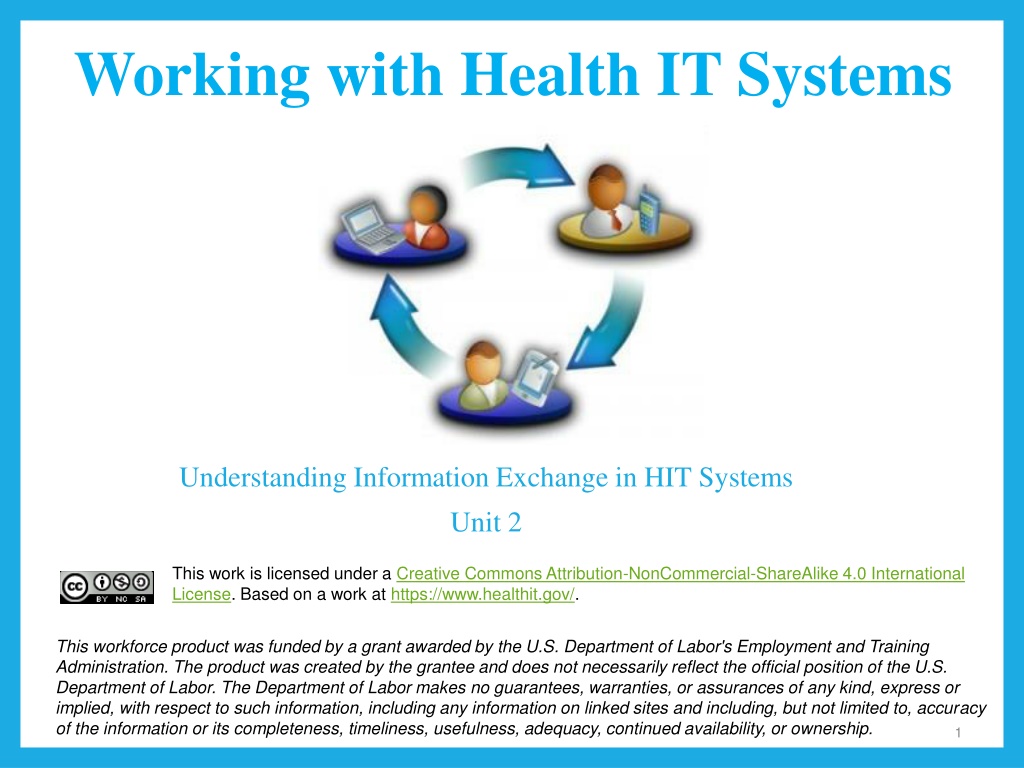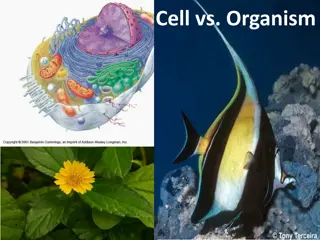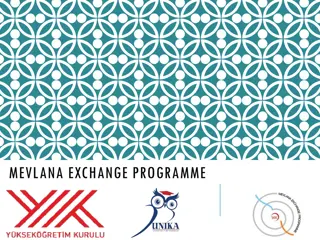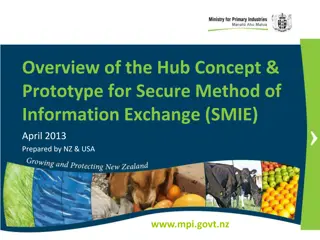Health IT Information Exchange
This module explores the entities involved in Health IT system data exchange, the importance of standards, and the various types of information exchange in healthcare organizations. It also delves into current efforts like NHIN, HIEs, and NHIN Direct to facilitate health information exchange at local, regional, and national levels. Additionally, it discusses the meaningful use program's incentivization of interoperability and electronic data sharing in healthcare settings.
Download Presentation

Please find below an Image/Link to download the presentation.
The content on the website is provided AS IS for your information and personal use only. It may not be sold, licensed, or shared on other websites without obtaining consent from the author. Download presentation by click this link. If you encounter any issues during the download, it is possible that the publisher has removed the file from their server.
E N D
Presentation Transcript
Working with Health IT Systems Understanding Information Exchange in HIT Systems Unit 2 This work is licensed under a Creative Commons Attribution-NonCommercial-ShareAlike 4.0 International License. Based on a work at https://www.healthit.gov/. This workforce product was funded by a grant awarded by the U.S. Department of Labor's Employment and Training Administration. The product was created by the grantee and does not necessarily reflect the official position of the U.S. Department of Labor. The Department of Labor makes no guarantees, warranties, or assurances of any kind, express or implied, with respect to such information, including any information on linked sites and including, but not limited to, accuracy of the information or its completeness, timeliness, usefulness, adequacy, continued availability, or ownership. 1
Understanding Information Exchange in HIT Systems Identify entities that are commonly involved in HIT system data exchange. Explain the need for standards and why they exist. Define and differentiate between vocabulary, content exchange, and privacy and security standards. Compare current efforts to facilitate health information exchange between providers, communities, regions, and nation (NHIN, HIEs, NHIN Direct). 2
Types of Information Exchange Exchange of information between systems used by a single health care organization Exchange of information between HIT systems of two or more different organizations/entities 3
Types of Information Exchange (cont d) Exchange of information between systems used by a single health care organization Image Courtesy of Michael Vaughn. 4
Types of Information Exchange (cont d 2) Exchange of information between HIT systems of two or more different organizations/entities 5
Information Exchange Use Case Imagine the ideal: easy transfer of health record data between providers, regardless of location. 6
Meaningful Use and HIT Information Exchange Incentive program encourages: Demonstration of interoperability Sharing of electronic data with patients eRx Quality measures reporting to CMS/States Drug formulary checks Medication reconciliation Summary of care records for transfers/referrals Immunization reporting to registries Syndromic surveillance reporting to public health agencies Lab results reporting to public health agencies Patient reminders Direct patient access to his or her record in an EHR 7
Interoperability of Systems Proprietary vs. standard methods of exchange Why are standards important? 8
Types of Standards Vocabulary, content exchange, and privacy and security standards (including transport standards) Vocabulary: code sets, ICD-10-CM, SNOMED CT, LOINC Content exchange: HL7 CDA R2 CCD, ASTM CCR Privacy/security: AES encryption, IPsec, TLS Transport: SOAP, REST 9
HIE Initiatives Health Information Exchange (HIE) The electronic movement of health-related information among organizations according to nationally recognized standards. HIO, RHIO Examples: HealthBridge, Indiana HIE, CareSpark, MedVirginia NHIN Image Courtesy the Association for Healthcare Research and Quality. 10
How Do We Get There? The ONC report Connecting Health and Care for the Nation: A Shared Nationwide Interoperability Roadmap version 1.0 Image Courtesy the Office of the National Coordinator for Health Information Technology. 11
Understanding Information Exchange in HIT Systems Summary Entities that are commonly involved in HIT system data exchange The need for standards and why they exist Vocabulary, content exchange, and privacy and security standards Health information exchange between providers, communities, regions and nation (NHIN, HIEs, NHIN Direct) This material was developed by Johns Hopkins University, funded by the Department of Health and Human Services, Office of the National Coordinator for Health Information Technology under Award Number IU24OC00013. This material was updated in 2016 by The University of Texas Health Science Center at Houston under Award Number 90WT0006. 12




























